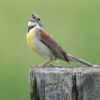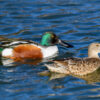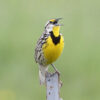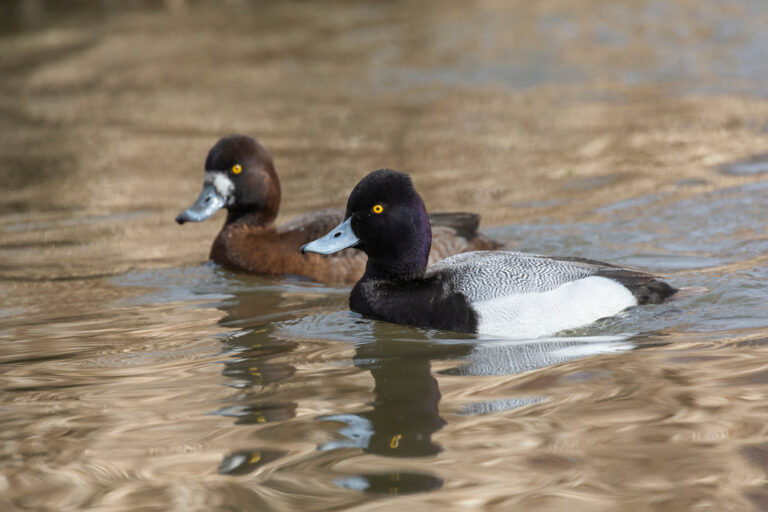
Lesser Scaup, Aythya affinis (pair shown above)
Greater Scaup, Aythya marila (see below)
Bill Rowe
If you’re birding in November/December, enjoying waterfowl migration, and you spot some ducks out on a lake that look “black at both ends and white in the middle” (to quote Roger Tory Peterson), you are seeing scaup. These two species belong to the genus Aythya, a group that make their living by diving underwater to locate their food. Of our five regular Aythya, only one, the Greater Scaup, has a world-wide range, being found all around the northern hemisphere. Here in North America, the Greater is somewhat localized: it breeds far north on the Alaskan and Canadian tundra and spends the winter largely on the Atlantic and Pacific coasts, or the Great Lakes. The Lesser Scaup’s breeding range overlaps to some extent but also extends south to the prairie wetlands of Canada and the U.S., and it winters all across the southern U.S. and Middle America. It is one of our most abundant ducks in migration and, overall, far outnumbers its Greater cousin, with a continent-wide estimate of about 90% Lessers and 10% Greaters. Getting accurate estimates of these relative numbers can be a problem for wildlife biologists, though, because the two species look so much alike. Experience helps, but these are still birds that you try to identify by multiple features (not just a single field mark) and report with caution. See Identification.
IDENTIFICATION: An adult male of either scaup has a black head and chest, a black rear end, and, in between, a pale gray back and whitish sides. Adult females are brown all over with a clear-cut white patch at the base of the bill, which is bluish in both sexes. So far it’s easy. Now, how do you tell the two species apart? Some points to remember: (1) Size is helpful only if they are side by side; then you can usually tell that a male Greater is a bit larger than a male Lesser, and similarly for females. (2) Head shape can be a good criterion for birds at rest on the water. Lessers’ heads look more upright and vertical, with a slight peak or “notch” at the rear of the crown. Greaters’ heads look larger and lower, with a high point at the front of the crown and the whole rear crown and nape being smoothly rounded or “fan-shaped.” But note two cautions: Head shape does NOT work if the birds are actively diving, and it is also problematic if a bird is immature (brown with dark eyes). (3) The wing-stripe is usually reliable if you get a good look at birds in flight or flapping their wings on the water: Lessers have white only on the inner half (the secondaries) while the outer half is all gray; on Greaters, the white extends part way onto the outer half (the primaries). (4) Don’t try to identify males by their apparent head color; it is too variable to be trusted. (5) See field guides for additional nuances. In general, it’s best to list your scaup as “Greater/Lesser Scaup” unless you have strong evidence for an identification.
ST. LOUIS STATUS: Lessers are common migrants, at times in flocks of hundreds or even thousands; in winter, their numbers are irregular and generally lower. Greaters are uncommon, in low numbers at all times, usually single digits, maybe up to a dozen or two. There are a few places, like Riverlands, where the two are equally likely in midwinter, and Greaters may sometimes outnumber Lessers.
Learn more and listen to the calls of Lesser Scaup here and Greater Scaup here.
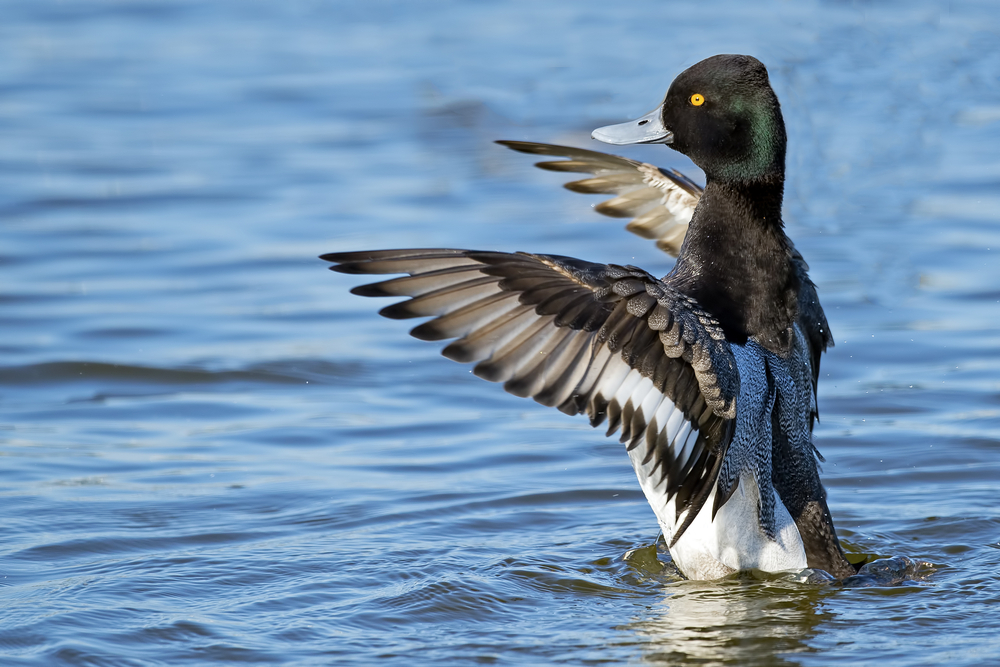

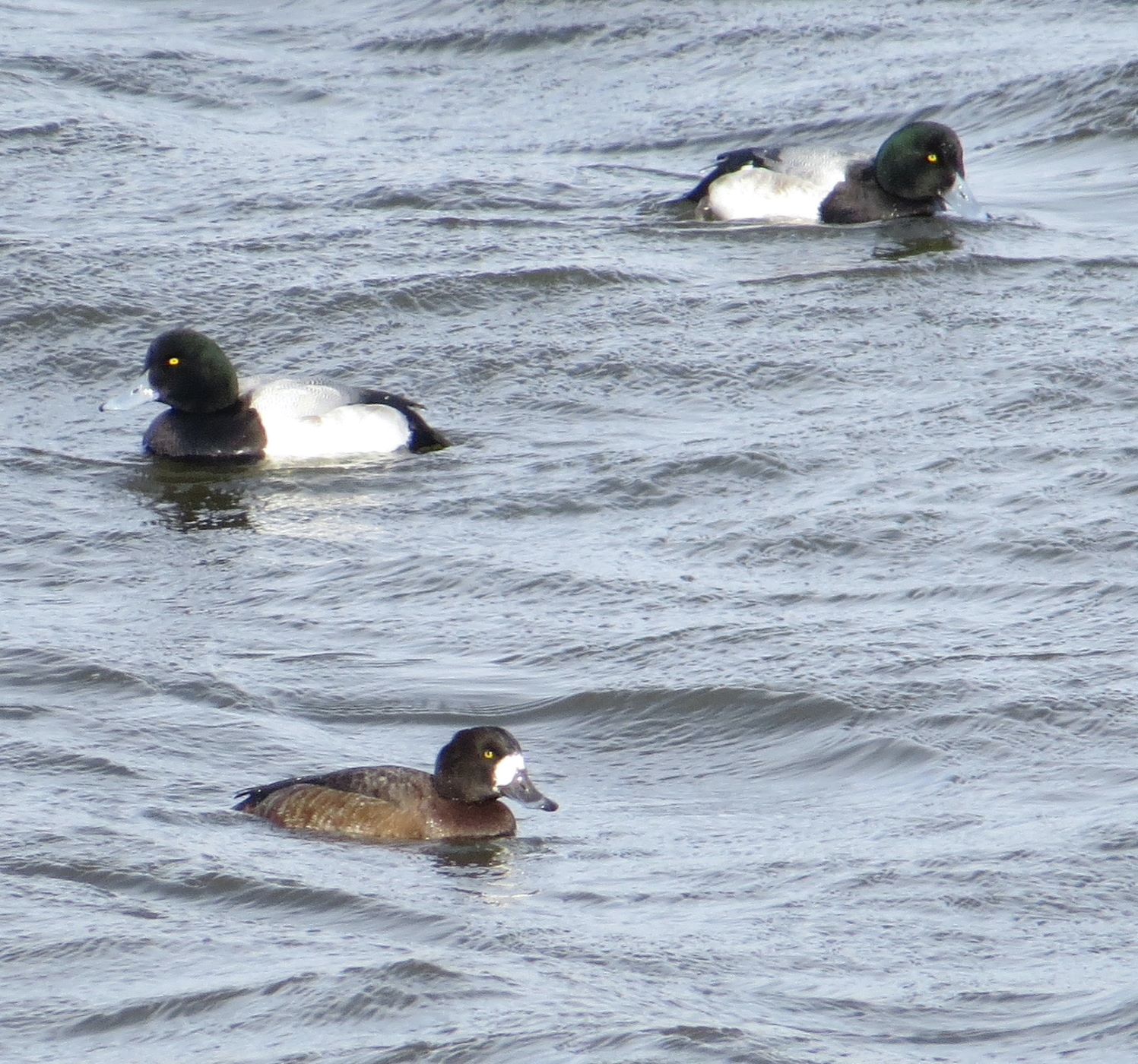
Male Greater: Note white extending out into primaries


